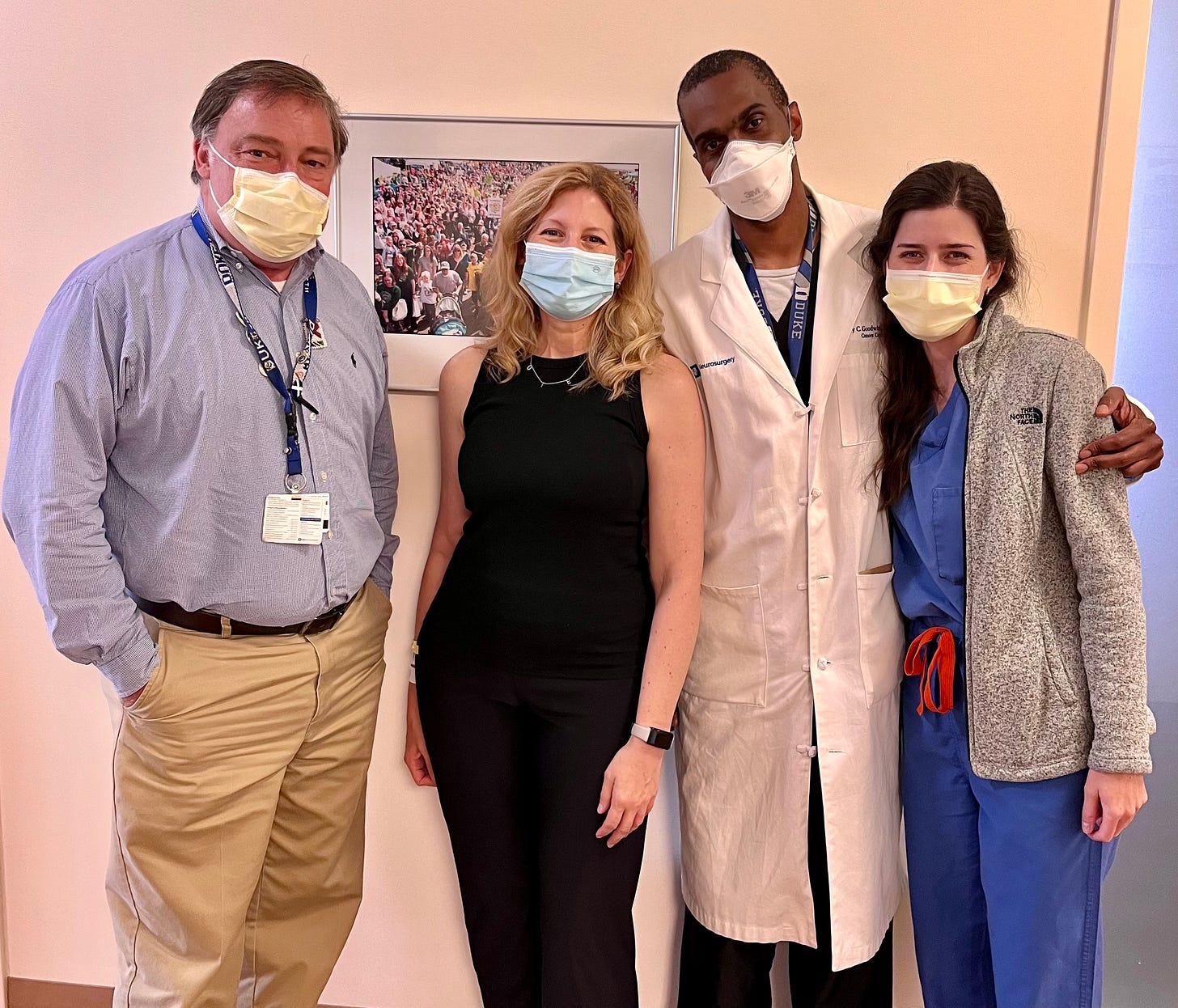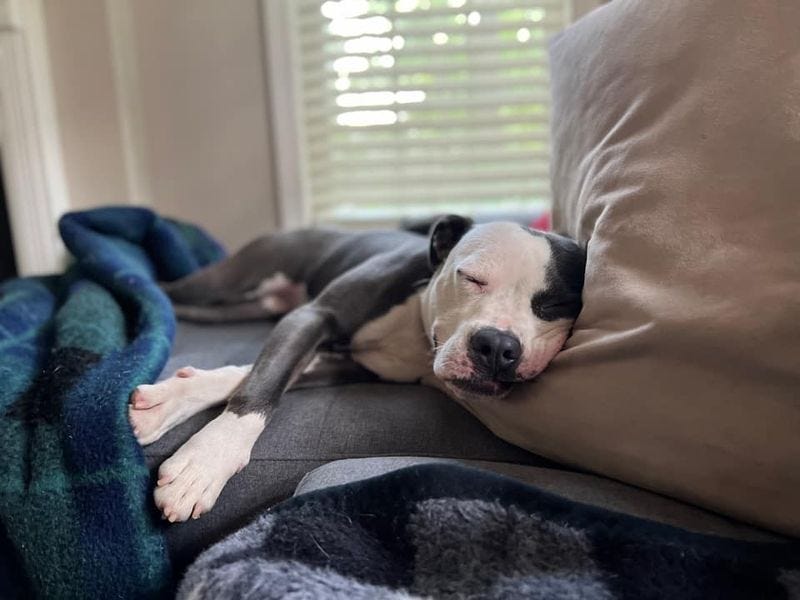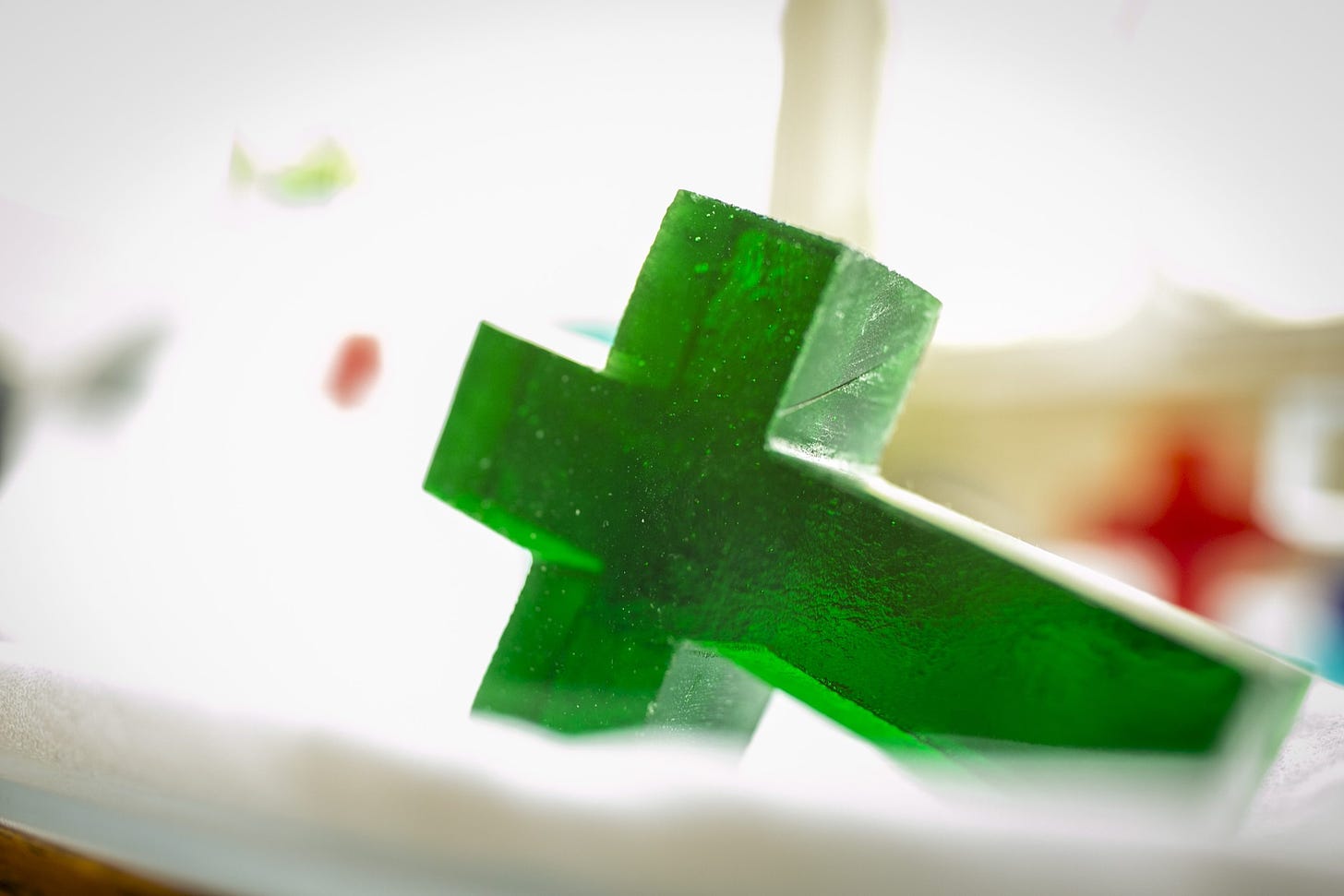Our friends have a beautiful pit bull puppy named Ruby. She is a giant heart full of love, if a heart were 50 wiggly pounds of sleek muscle and silly grins and sensational amounts of energy. Training a puppy requires time and focus and consistency. Training Ruby requires all of that plus miles of running and pack walks and trail treks and toy time—if Ruby doesn’t have a healthy outlet for all that energy, she will find other ways to entertain herself that tend to lead to a short lifespan for shoes or furniture. Success looks like a tired, happy puppy.
I am not going to compare myself to Ruby—apart from the silly grins, I don’t much resemble an energetic, muscular, youthful creature. But I am OK with embracing the puppy rewards scheme for focused effort: naps and rest and breaks and down time. (Occasional treats are acceptable, too!) After the surgery and stereotactic radiotherapy and initial weeks of recovery, it has been wonderful to be back home and enjoy a pause from appointments. A break from clinics and the hospital. Days between conversations with doctors or therapists. Hours when I don’t think about anything health related. Even a pause in reflections and updates. I’ve felt like a puppy who has used a tremendous amount of focus and effort in her training session and is now enjoying a nap in the sun.
Treatment and Transition
My three sessions of stereotactic radiotherapy went well. The first session required my parents and I to leave their house before 5 a.m. to make it to the appointment, which—as a noted Not A Morning Person—was unpleasant. But otherwise my stint in the beanbag getting zapped was fine. My friend Jennifer was able to take me for the second appointment, especially noble of her since she had just had surgery for a broken toe the week before. We were a hoot, tootling around the cancer center with me hobbling and wobbling and her on a wheeled mobility aid! For the final session, my friend Kim whom I’ve known since high school drama camp drove me. What a delight to have a chunk of time to catch up on stories of working in higher ed and to share about our families and to be together.
My physical experience of stereotactic radiotherapy was very different from my other radiation treatments. Apart from recovering from my very early start on the first day, I had minimal fatigue. I did not have any skin damage. I did not have a pain flare. I didn’t notice any other side effects. When I met with the radiologist afterward, he professed to be pleased with how it had gone and said I did well at my one job: lying still. (I would like stillness to be a more highly valued skill, as I am apparently very good at it. Why isn’t that listed in StrengthsFinder?) He confirmed that I could remove my collection of stickers “unless you want to wear them out clubbing” (and … what clubs is he going to?? I’m not exactly Hip with the Drip—a phrase I’m using here intentionally to make my kids cringe—but are Sharpie marks on your midriff a cool thing that people do? I took off my stickers and did not go clubbing). After a final check-in phone call the next day, I was all done with this round of treatment!

I also had a final check-in with my fabulous neurosurgery team and was given the green light for driving, physical therapy, and daily activities as long as I remain mindful of my BLTs—bending, lifting, twisting restrictions. I am so grateful that this team looked at my grade 3 spinal cord injury and my crumbly bones and my metastatic havoc and said, “We can help.” What a blessing.
The Miracle of Ordinary
I’ve now been home for a little over three weeks, long enough for the dog days of summer to transition into the crisper days of fall, for school to resume its regular rhythms, and for my systemic treatment schedule to get underway again. My new spine and I are getting along well; I have almost no discomfort except for some occasional reminders from my muscles that they’re still busy trying to heal. Strength, endurance, and balance are still rebuilding, but I’m able to do most daily life activities (sometimes with breaks). My friend Jennifer had the best phrase: it is the miracle of ordinary.
It's tempting to conflate ordinary with basic or even boring. But I thought back to a chapel service this spring at Duke Divinity School, where I work. Every year we distribute glass crosses to graduating students, and each year they are a different color representing a season of the liturgical calendar. This year we had green crosses for Ordinary time. The remarks by Chaplain Meghan Benson have stayed with me:
If you talk to many liturgical scholars, they will argue rigorously that Ordinary time is not called ordinary because it is ordinary; it is called ordinary because it is marked by ordinal numbers.
This irks me. Because what’s so wrong with being ordinary?
By definition, ordinary is what is expected in the normal order of events. We are creatures of habit and ritual, and having a general pattern to our days with reasonably predictable events is part of what injects feelings of comfort and security. That is part of what has made the last few years so difficult—all of our ordinary structures and foreseeable futures have been upended. The reality is that so much of life is lived in the grace of ordinary days, between the penitence and preparation of Advent and Lent and the joy and wonder of feast days. In the midst of seasons of feasting and fasting emerges Ordinary time, returning us to the beauty of normal rhythms, and the gift of predictable routines. I suspect I am not the only one here who has come to yearn for the gift of ordinary days in the midst of times that feel so chaotic and hard and unpredictable.
My prayer is that these green crosses will remind you of God’s patient presence in the ordinary, that we should not take ordinary moments for granted. May you discover all these ordinary and extraordinary days have been places of new growth, new learning, and renewed trust in God’s good future. When you all look at these crosses, my desire is that they do not simply remind you of the challenges and complexity of this season—but that they remind you hardship is never the end of the story. God’s glory will not be contained—not in a womb, not in a tomb, not by powers and principalities, not by pandemics. Green reminds us that God is doing a new thing, with all us ordinary people.
The blessing and miracle of Ordinary indeed.






Praise God for your good recovery.
Beautiful as always, Heather. And I don’t quite have the word for it – – your joy, contentedness, certainty, trust in our Lord always shines through. Thank you for that gift and for your beautiful writing. Praying for you and the family. (And Ordinary time is my favorite liturgical season! 😅)